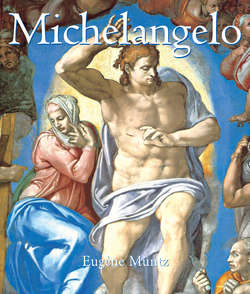Michelangelo

Реклама. ООО «ЛитРес», ИНН: 7719571260.
Оглавление
Eugène Müntz. Michelangelo
Introduction
The sculptor
Late Renaissance Sculpture
The Oeuvre
The Painter and the Draftsman
Late Renaissance Painting and Drawing
The Œuvre
The Architect
Late Renaissance Architecture
The Œuvre
Conclusion
Biography
Отрывок из книги
1. Portrait of Michelangelo, ca. 1533. Black chalk. Teyler Museum, Haarlem.
2. Copy of a figure from “Tribute Money” by Masaccio, 1488–1495. Kupferstichkabinett, Munich.
.....
9. Leonardo da Vinci, Mona Lisa, 1503–05. Oil on canvas, 77 × 53 cm. Musée du Louvre, Paris.
This was also the era of Sandro Botticelli’s Spring and Birth of Venus. If Botticelli’s strength lay in rendering the beauty, balance, grace and harmony that typified fifteenth-century Florence, Michelangelo’s focus lay entirely elsewhere. After Masolino and Masaccio, Fra Filippo Lippi’s son Filippino, also a student of Botticelli, went on to work on the Brancacci Chapel. Lippi’s frescoes in the Santa Maria Novella Church were already heralding the shift from the Golden Age to the Mannerism of the Late Renaissance.
.....